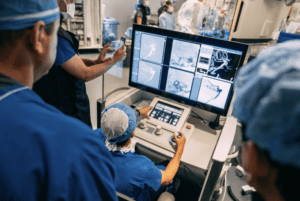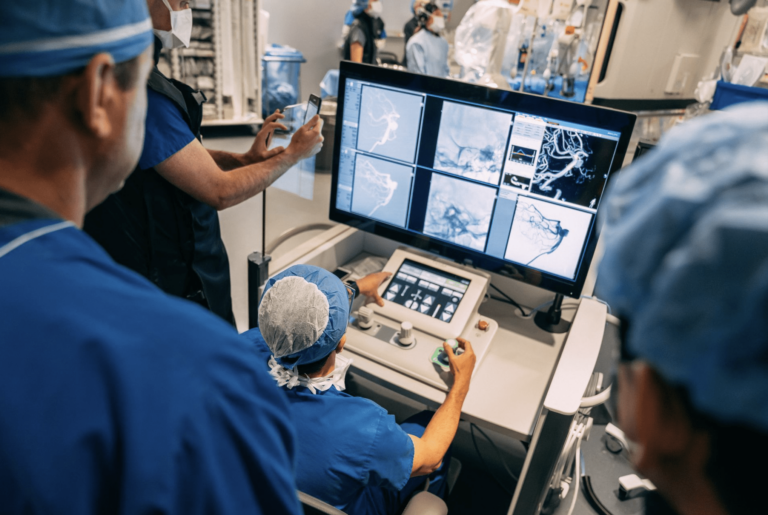Doctors in Toronto, Canada have performed their first robot-assisted brain surgery on a live patient, testing a system they believe will allow them to operate remotely on stroke and aneurysm patients in the near future.
The team at the University Health Network guided a robot to place a stent and 14 coils inside the brain of a 64-year-old woman to treat an aneurysm. The procedure demonstrated the ability to use the system to treat the delicate vessels of the brain.
“This is important because the robotic system brings a lot of precision and control to these procedures,” said Vitor Pereira, a neurosurgeon and neuroradiologist with the Krembil Brain Institute at Toronto Western Hospital.
“It opens the door to do remote procedures in communities where they don’t have this type of treatment and don’t have the personnel to perform these procedures too.”
Surgical robots are used routinely in the USA and in some Canadian hospitals for various procedures, including knee replacements and prostate and heart surgeries. However, it has taken more time to develop a robotic system able to navigate the thousands of major vessels in the brain.

The system, developed by Corindus, a company owned by Siemens Healthineers, can be used to block blood flow to weak spots on brain vessels, or aneurysms, to prevent a haemorrhage. It can also be used to remove blockages involved in a stroke.
During the procedure, while doctors were at the patient’s bedside, Pereira operated the system’s robotic arms from a console several metres away.
The doctors first made a small puncture in the patient’s leg and threaded a catheter through her femoral artery up to her neck, which is how they typically perform the procedure.
But from there, using an X-ray for guidance, they controlled the robotic system to lead the catheter into her brain, where it placed the stent and coils.
The coils prevent blood flow to the aneurysm, and over time a new layer of cells reconstructs the vessel without an aneurysm.
According to Pereira, the procedure took approximately 2.5 hours. The patient was discharged the following day.
The team may consider performing a fully remote procedure next year, however Pereira admitted the system has limitations.
“It can still only do the intracranial part of a procedure, which means someone still needs to be present to do all the preparation work, including putting in the catheter,” said Pereira.









